Redressing: Portraits of Style, Will, and Spirit
Wang Fei’s Works Exhibition
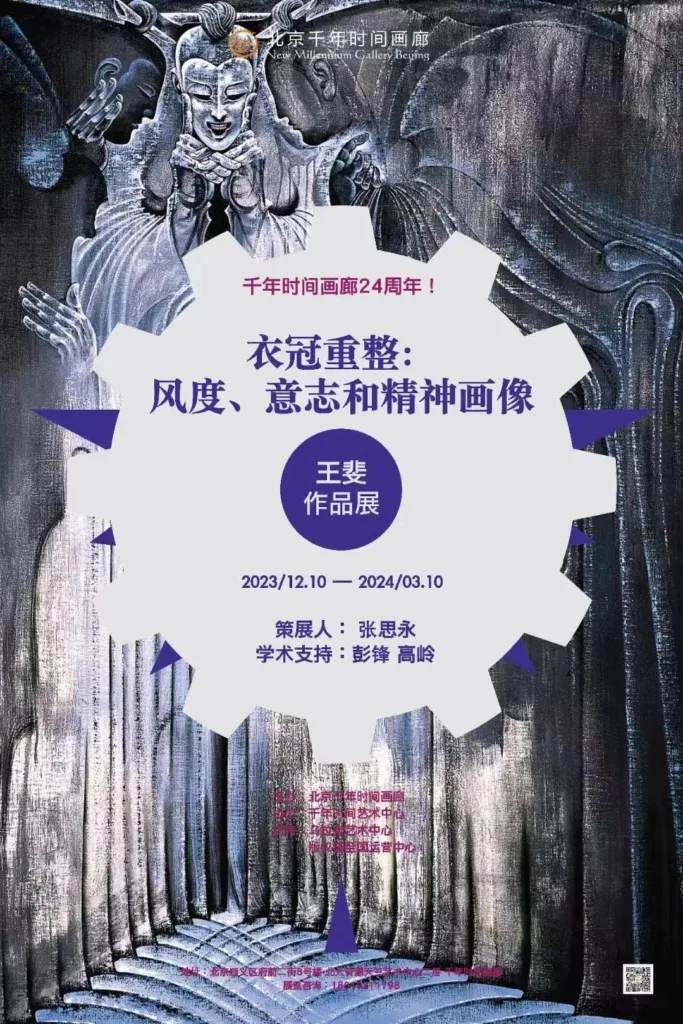
Millennium Time Gallery 24th Anniversary!
Redressing: Portraits of Style, Will, and Spirit
Wang Fei’s Works Exhibition
Exhibition time: 2023.12.10 –2024. 03.10
Curator: Zhang Siyong
Academic support: Peng Feng Gao Ling
Sponsored by: Beijing Millennium Time Gallery
Co-organized by: Millennium Time Art Center
Support: Uruguayan Center for the Arts
Copyright chain national operation center
Peking University Resource Art Center
Knight Story: The Aesthetics of Will by Contemporary Artist Wang Fei
Text/Zhang Siyong
A maverick young artist with strong cultural fundamentalism and tragic consciousness;
A contemporary knight whose art blends Gothic wildness and Baroque metaphors;
A young man who looks shy but hides Yukio Mishima’s paranoia, aestheticism and solemnity. From “Beheading Picture” to “Gathering in the Sand Tower”, from “The Clothes Go Away” to “The Road to Dignity”, Yi With lonely clothes and empty eyes, Wang Fei’s works express the crux of the problem faced by contemporary Chinese youth in facing the country’s lost dignity, and at the same time their fascination with high-quality mixed-race cultural genes.
Wang Fei’s studio displays many works that he just completed in 2008, including “Ultimate Beheading Picture” and “I am bleeding with the blood of 1645”. These two works strongly reveal the calm appearance and crazy heart. It shows the wild artist’s profound concept of Chinese people’s reality and history. “Ultimate Beheading Map” comes from Wang Fei’s early classic “Beheading Map” during his university days. “Beheading Map” was once called by many media as the most wonderful, classic and weirdest imagination of the East Asian territory in this century. It is difficult to It is believed that it came from the heart of a young man, and 12 variations are scattered in the hands of collectors from all over the world, including celebrities such as Cai Kangyong and Daniel Wu. Since then, it has been difficult to find a single painting. Wang Fei said frankly: “The picture of Zhizhi expresses the lost warrior in the hearts of the Chinese people, and the “ultimate version” has a more accurate imagination of the plate and the overlooking of the God’s view of the turbulent continent and ocean. It is the ultimate interpretation of his classic.” Famous Aesthetics Artist Peng Feng once said, “Wang Fei’s paintings move from the narration of historical events to reflection on the philosophical and religious levels. At the same time, they can avoid the criticism of narrow nationalism. They express the belief, ambition and belief of today’s Chinese teenagers when they look back on history.” With complex emotions and tragic poetry mixed with shame, anger, sadness, his art sublimates ‘shame’ into a universal religious emotion…”

As early as 2004, he created for the first time an extremely personalized Han Chinese “dress” that refers to the Chinese spirit of cultural fundamentals. This was his will.
“Tannu Pavilion” and “Demon Sword” are two early works by Wang Fei that express the tragic spirit of the Chinese people when he was not graduating from the Central Academy of Fine Arts in 2004. As soon as they were exhibited at that time, they were appreciated by the collector Mr. Zhang Rui. These two works The profound works use symbolic image language to fiercely and elegantly convey contemporary Chinese people’s new understanding of the lost dignity. It can also be said to have paved the way for Wang Fei’s famous “Beheading Picture” that was later widely circulated.
However, Wang Fei is keenly aware that the historical tragedies of China and Japan are not the real source of the spiritual decline of the Chinese people. Under Wang Fei’s seemingly calm appearance lurks a rebellious heart. He traces the path of Chinese people’s dignity back to 300 years ago. “The clothes are gone” and the Mongol invasion 700 years ago. Rather than saying that Wang Fei’s world is historical mysticism, it is better to say that he bases the contemporary Chinese people’s rejuvenation passion on his personal dark philosophy. This dark philosophy is truly It has attracted a group of people with high-end intellectual literacy and taste, and has collected a large number of his most controversial works such as “Beheading Pictures” series, “Lend Me Seven Hundred Years” series, “Youthful Sorrow” and so on.
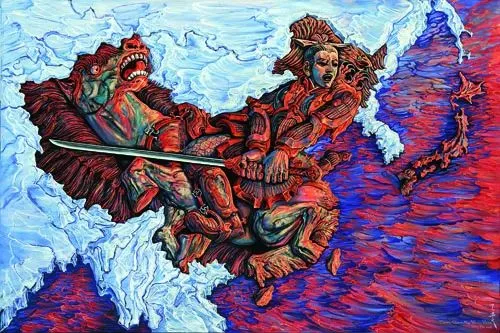
The famous Chinese emerging painting exhibition curated by Mr. Wu Jin in 2007 was the first time that the theme of the entire exhibition was named after the work of a young artist. That is Wang Fei’s representative work “Gathering Sand Tower”. This may be Wang Fei. What I often believe in is “Heroes cherish each other”. Coincidentally, masterpieces such as “Gathering Sand Tower” and “Heroes Cherish Heroes” were successively collected by the person in charge of the Greater China region of Germany’s top luxury kitchenware brand. In the words of the collector at the time Said: “In this era, artists are the ones who cook spiritual food for us. The unique personality and independent spirit of Wang Fei’s works are in line with the appreciation taste of a small number of high-end people.”
Wang Fei’s artistic thinking is completely different from the current art situation that is obsessed with popular symbols. He is very good at exploring the crux of the Chinese people’s hearts from different plots. His latest work “I flow the blood of 1645” is a huge 6-meter-long work. Typical of Fei’s core concepts, the bone-chilling coldness and pathos that penetrate deep into the ice, the tragic sexiness of men in life and death: the heart-piercing pain of three hands clenching the blade; three long knives embedded in the ice; the climax The broken knife is like the broken strings of the guqin when the love is strong. The blood of 1645 flows into the veins of the contemporary young knight, cold and hot. Ray Dali, a famous American scholar, looked at Wang Fei’s works from a Western perspective and said: “He expresses the painful truth of Kierkegaard, the father of existentialism: life, whether from a historical perspective or a personal perspective. Looking at it, while looking at the future, he has to understand the past in reverse. His works explore the shame of a culture that is cut off from its own spiritual source, and are an elegy dedicated to that disappearing world…”

“Mystery, tragedy, and magnificence” can be the keywords of Wang Fei’s world-of-will art. The unique male image in his works always has a strong aloof aristocratic temperament that stands out from the times, bringing a sense of style to today’s people. It has an ancient meaning that is both familiar and strange, but also reveals a spectacular and desolate atmosphere of the future. The nature of the times has never been a question for Wang Fei. The men in his works are like the ronin wandering between the old and new eras in Akira Kurosawa’s movies, and more like the reincarnated nobles in Yukio Mishima’s “Sea of Plenty” The pine branches are clear.
Wang Fei has always attributed the current situation that the Chinese “scholar” spirit has not been successfully “contemporary” and the cultural phenomenon of Japanese culture usurping China’s status in the oriental form to a specific tragic era, that is, the “clothes went away” in 1645. ” era, Wang Fei keenly believed that the rise of landscape painting in the Song and Yuan Dynasties and the decline of figure painting in the Ming Dynasty hinted at the reclusiveness of the Chinese people’s “personality form” and the lowercase “人”, and at the same time, the capital “人” in the works of Japanese Utagawa Kuniyoshi, Wang Fei said frankly: “Revolutionary hair and different clothes are the Chinese aesthetic characteristics and temperament that have been raped by the whole people. Those who were martyred in the “Ten Days in Yangzhou” and the Three Massacres in Jiading are the true “scholar” spirit that embodies the style of the pre-Qin, Han and Tang Dynasties. , the martyrdom is also the aesthetic temperament that we can only experience in Japan today. The so-called Tatars and Chinese people in Japan are derived from China’s “clothes and clothes are gone”… I pay great attention to the relationship between power and will from the pre-Qin, Han and Tang Dynasties. The change from personified statues to landscape literati paintings of the Song and Yuan Dynasties. Since the Ming Dynasty, personified images have taken on completely different statuses in the aesthetic will of the Chinese and Japanese nations. From this, it is not difficult to see their different fates in the following centuries. The Japanese nation Armors handed down from ancient times are enshrined in halls to this day. Armors have become personified ghosts and family religions. People gain spiritual dependence and will to survive in the sense of ritual. Is the Chinese nation deliberately vilified by Westerners as a nation wearing a five-pointed star on its head or a bald nation with braids? Or are they just men in fine clothes? Japanese sci-fi mechas are variations of classical samurai. The disappearance of personalized aesthetics also represents the departure of a kind of spirit.”

Just like the loneliness and weirdness of Grenouille in Suskind’s novel,
He wants to find the castle of the dark noble and save his tired fantasy,
This is his will.
Wang Fei is already a rebel in today’s young art, a cold aesthetic style and lonely will that mixes classical elegance with paranoid chill. The works of young artists who never consider the market and create quietly have appeared in the private collections of well-known collectors such as Zhang Rui, Tsai Kangyong, Daniel Wu, and the Swiss ROSSI family. The tragic spirit of young artist Wang Fei has always touched the most high-end aesthetic groups. Wang Fei said, “A bad market is like a wasteland beast kept in a circus, and a good market is like the unyielding genius protected by Fabre’s Barren Stone Garden. Only heroes can cherish heroes.” He has been commented by many top fashion magazines as “Walking in the Wilderness” “Knight of Will Above the Dust”, he has also been favored by the top luxury goods circle, including the “Lesotho Promise” diamond necklace, Alpha Nero super yacht, Bordeaux winery… the top luxury magazine “ROBB REPORT” ) specially commissioned artist Wang Fei to create a cover-themed work for it. Wang Fei cleverly perfectly integrated the “Chinese clothes” and “ultimate gift” created by himself, and named the painting “Gift to the King”. Wang Fei He is the youngest artist in the history of “Robb Report” cooperation with Chinese artists in top fashion and fine art. The “ultimate gifts” selected by “Robb Report” have been transformed into totems that pay tribute to the aristocratic spirit in the uninhibited vision of the new generation artist Wang Fei.
Since Wang Fei’s solo exhibition “Will versus Will” last year, “Will vs Will” has almost become his personal LOGO and life motto. This unique expression can easily be associated with his interpretation of Nietzsche’s theory of will and Wagnerian historical metaphors. Hobby. He came up with the concept of hybridizing the Chinese tragedy text and the Western totemic ritual-heavy Gothic mysterious metaphor very early. The famous critic Gao Ling once said: “Wang Fei’s paintings are not so much grandiose. The return of narrative is rather a personal narrative in which the self gains super power in a transformed form. This is the most effective way for young people like him to use art to resist the crises and temptations of reality. It seems to have A kind of magic that absorbs and condenses all the surrounding forces, resists the temptation and erosion of the materialization and homogenization of the real world, and conveys to us a very different kind of youthful sorrow…”
<Note: This article was written in 2009 and has been published in “China Science and Technology Wealth” magazine and “Knight Story” Wang Fei’s collection of works. The word count has been reduced from the original text>
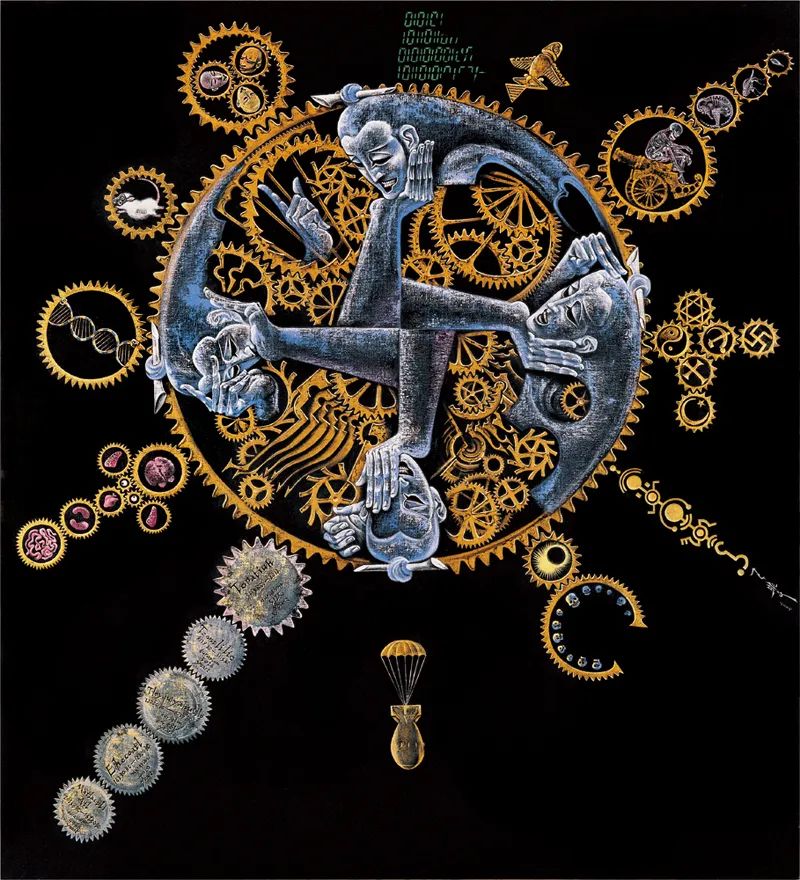
Exhibition site
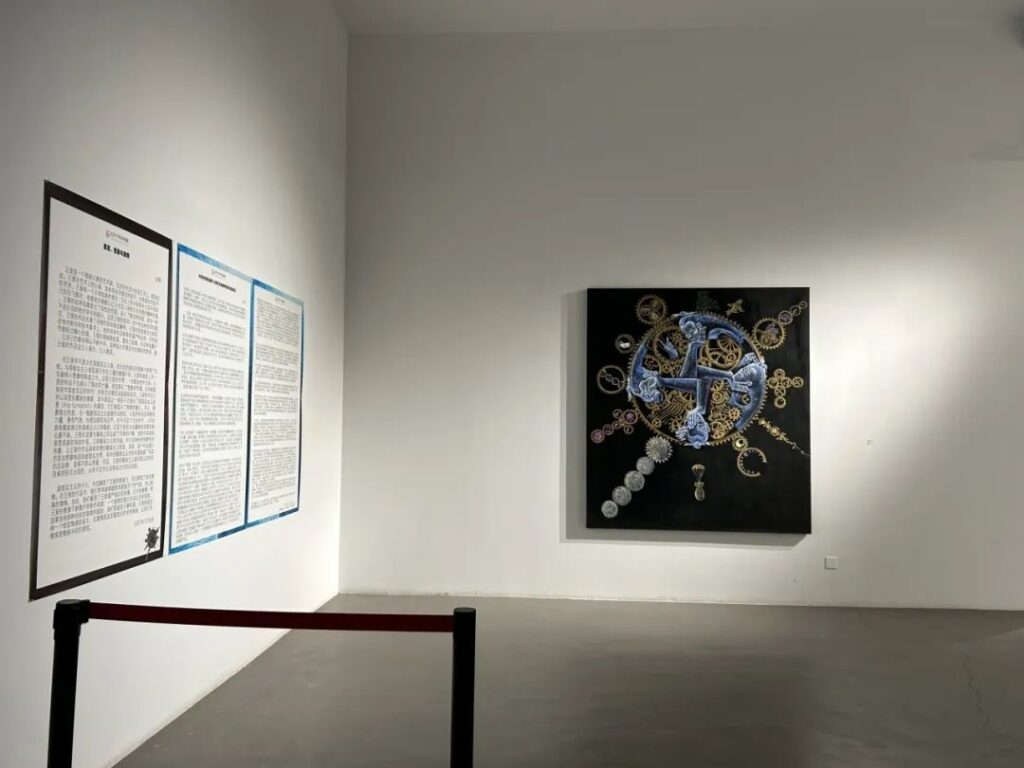
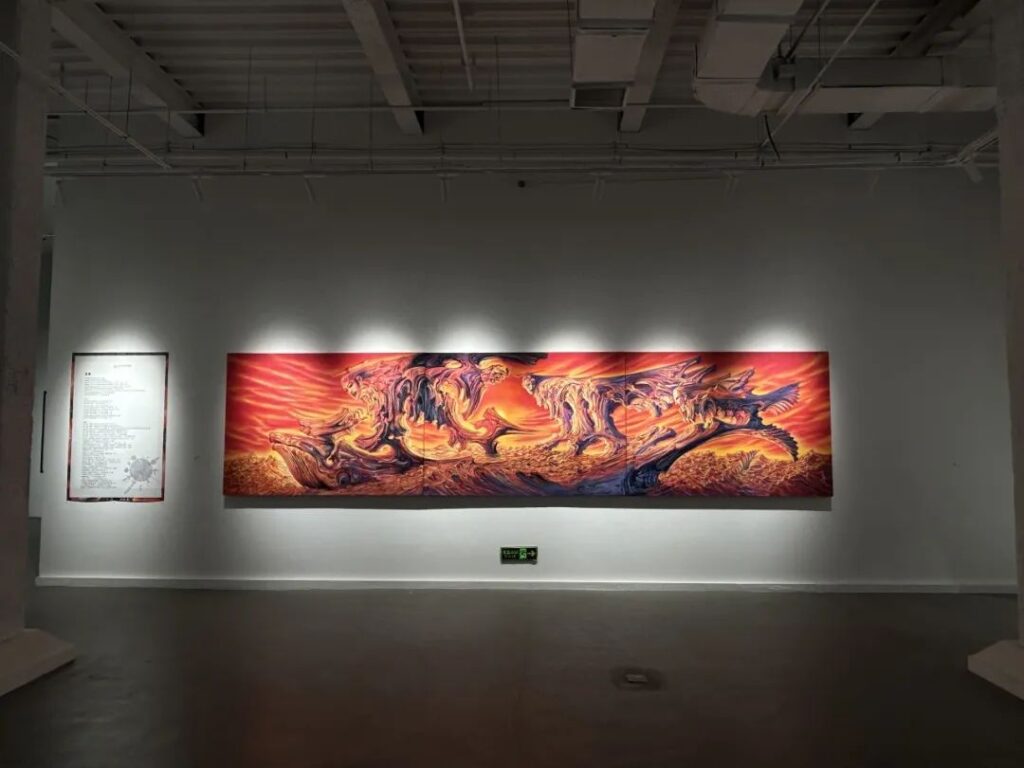

In today’s popular era, people are suspicious of elite-minded heroism, so the Pop style that caters to popular tastes has endured. Wang Fei has achieved a clever balance between Pop and Elite. His works have both a Pop or fashion appearance and an elitist connotation. Wang Fei’s persistence in the purity of cultural identity gives Wang Fei’s works a strong sense of elitism. However, because the works show a surreal world constructed from imagination, the elitism in them transcends the oppression of reality. It seems less sluggish; moreover, Wang Fei’s elitist consciousness appears in the form of self-injury and introspection, so it will not cause too much oppression to the public.
The intervention of surrealism not only liberated Wang Fei’s imagination, but also unleashed his passion. In Wang Fei’s works, we can often feel the domineering magnanimity and overwhelming passion. From this, we see the romance behind Wang Fei’s caution. The huge passion constantly pushes Wang Fei’s imagination to new heights, a height that ordinary intelligence cannot reach. We would literally shudder without the resistance of that self-inflicted look. Wang Fei is such an artist who controls emotions. When passion erupts to its highest point, he suddenly touches the ground, allowing us to enjoy the game of emotional surfing.
——Peng Feng: critic, curator, professor at Peking University School of Art
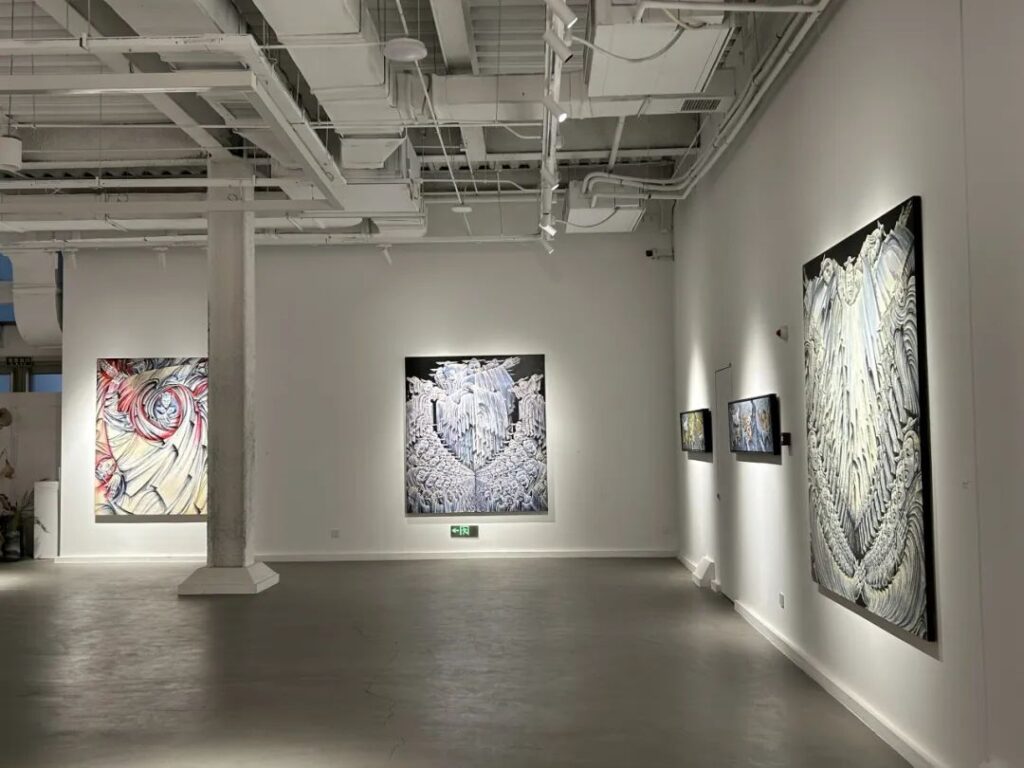
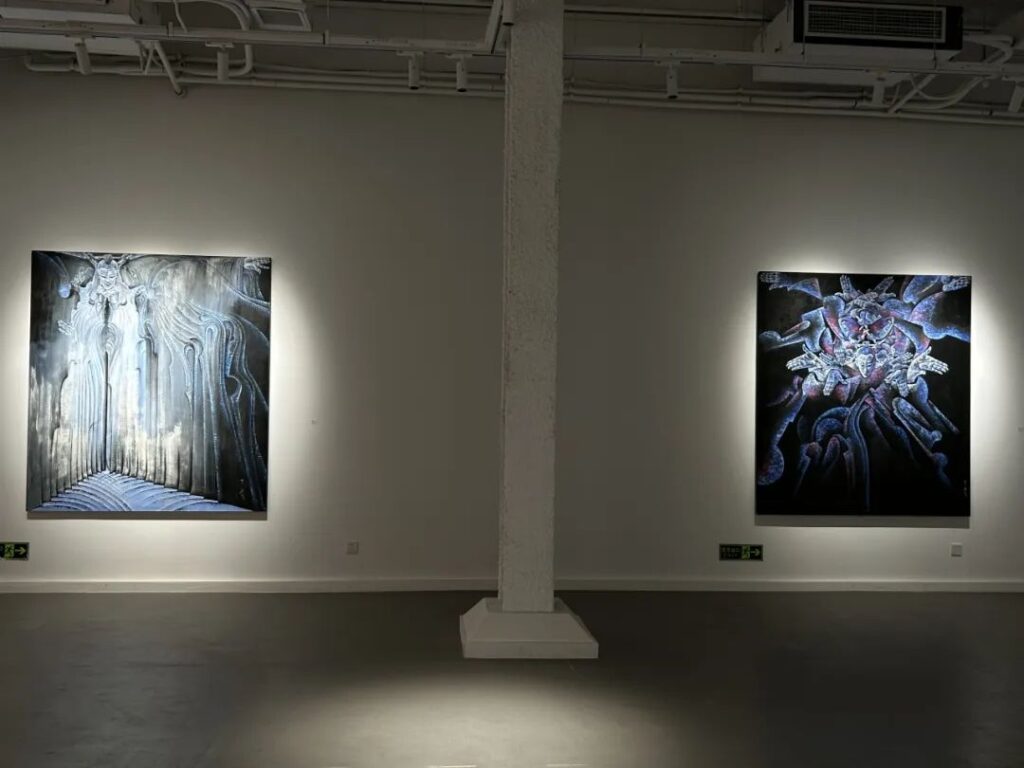
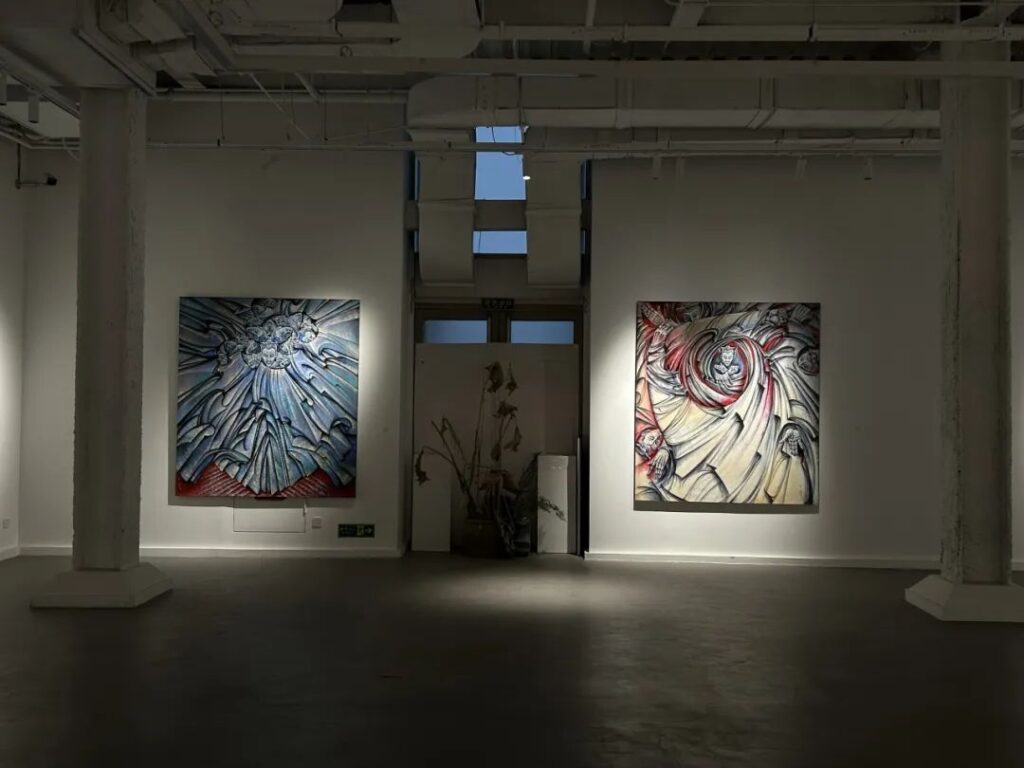
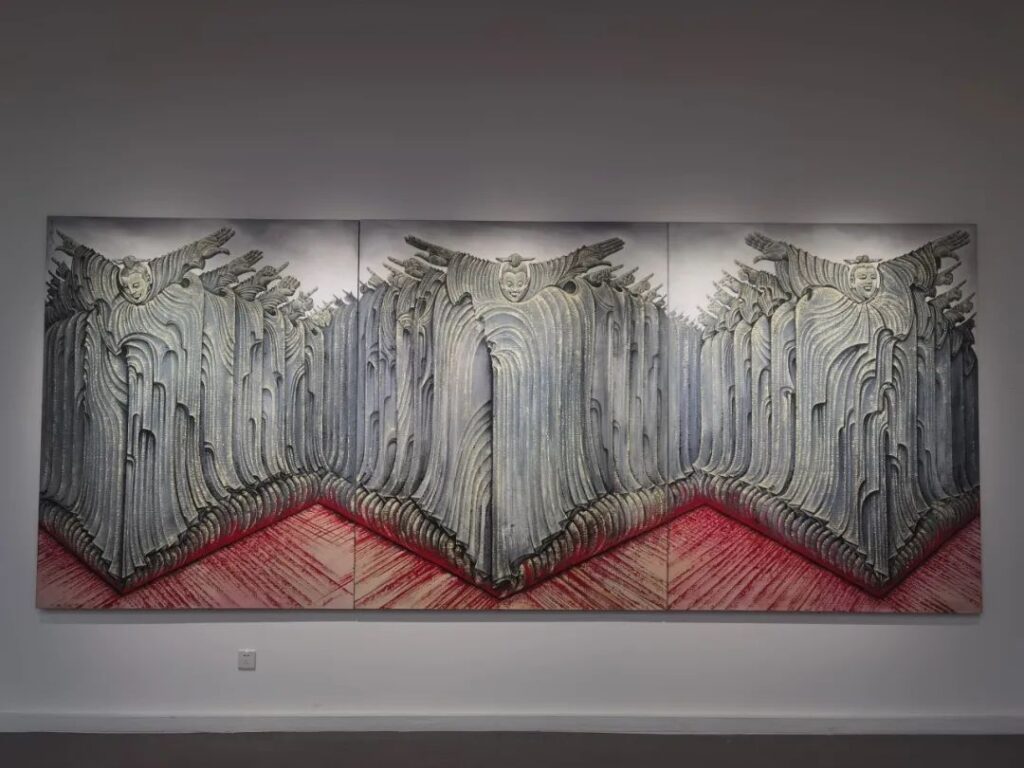
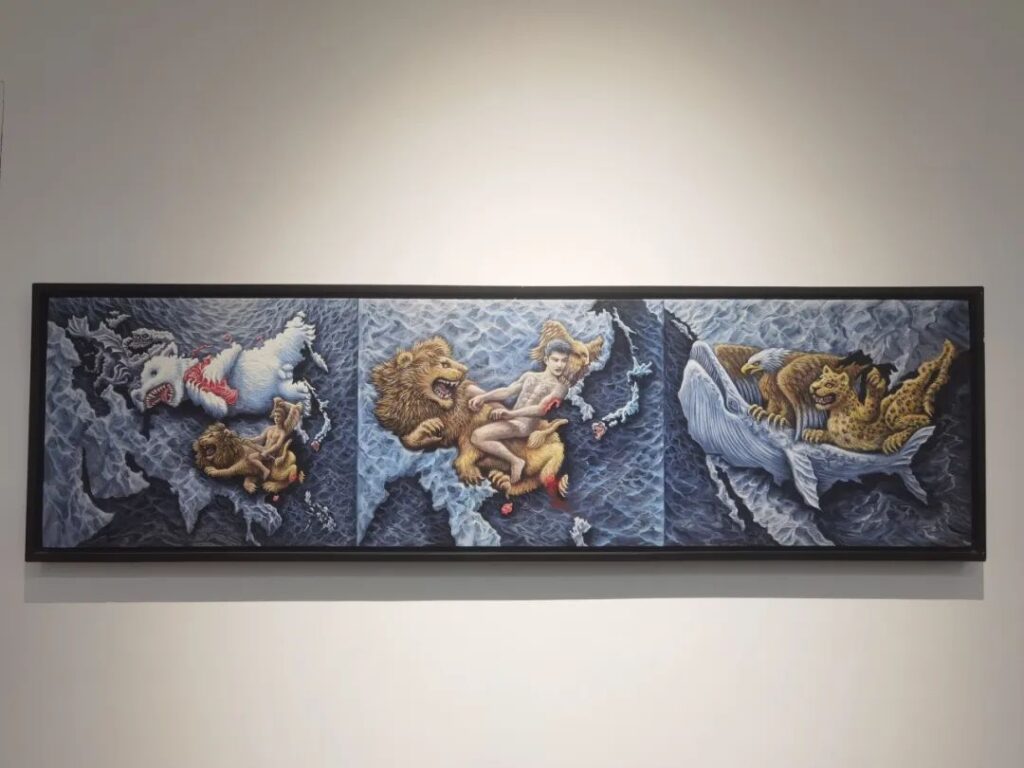



Unlike other artists of his generation, Wang Fei is clearly aware of the decline of a grand worldview guaranteed by single rationality or some kind of political preaching. But he is also clearly aware of the impact of commercialization and materialization on the spiritual temperament of the Chinese people. erosion and engulfment. Therefore, he turned to his own works, and by constantly repeating and deforming the forms of his works, he infused what he considered to be superpowers as a way to resist and supplement reality. Therefore, Wang Fei’s paintings are not so much the return of a grand narrative, but rather a personal narrative in which the self gains super power in a transformed form. Wang Fei observes reality from the perspective of his own works. He metaphorically transforms and expresses various feelings about reality in his own kingdom of images. This is how young people like him use art to resist the crisis and reality of reality. The most effective way of seduction. And the style of his works clearly tells us that he is the pinnacle of this approach. Let us once again quote a passage from the famous Italian critic Oliva to help explain Wang Fei’s works: “Today has become an era in which we cannot survive. In this era, we can only turn to memories, to the past, and therefore to culture. It’s possible.”
——Gao Ling: critic, curator, professor at Tianjin Academy of Fine Arts
About the artist
